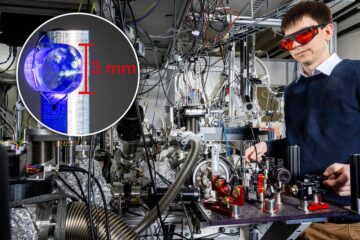Nucleic Fluorescent Probes for the Specific Detection of Single Base Alterations

</a><strong>Technology</strong><br>The present invention relates to forced intercalation probes (FIT-probes) based on nucleoside analogues with fluorescent artificial nucleobases. Thereby the nucleoside analogue is incorporated into DNA or RNA in the place of a single native base.<br>As such, FIT-probes may be employed in a large number of applications including genetic diagnostics, disease predisposition, pharmacogenetics and pathogen detection. The FIT-probes exhibit a simplistic mode of action and are able to detect single base alteration. They further possess few design constraints and show melting peak data which can be interpreted easily. The assay has been demonstrated to function efficiently directly from samples without prior purification of nucleic acids making the probe technology suitable for point-of-care diagnostics.</p>
<p><strong>Benefits</strong> <ul> <li>More specific and sensitive than common PNA probes</li> <li>First time manufacturing of DNA probes</li> <li>Abdication of linker enhances dye properties</li> <li>Enhanced sensitivity as probes differ between correct and incorrect hybridization</li> <li>Application at room temperature</li> <li>Wide range of application</li> <li>DNA probes allow detection in living cells by Fluorescence in situ hybridization (FISH)</li> <li>Enzyme activity is not influenced</li> <li>Inexpensive production</li> </ul> <p><strong>IP Rights</strong><br> EP Patent Application filed 09/2009<br> US Application filed 03/2012 <br> <br> <strong>Patent Owner</strong><br> Humboldt-Universität zu Berlin<br> </p>
Weitere Informationen: PDF
ipal GmbH
Tel.: +49 (0)30/2125-4820
Ansprechpartner
Dr. Dirk Dantz
Media Contact
Alle Nachrichten aus der Kategorie: Technologieangebote
Neueste Beiträge

Atomkern mit Laserlicht angeregt
Dieser lange erhoffte Durchbruch ermöglicht neuartige Atomuhren und öffnet die Tür zur Beantwortung fundamentaler Fragen der Physik. Forschenden ist ein herausragender Quantensprung gelungen – sprichwörtlich und ganz real: Nach jahrzehntelanger…

Wie das Immunsystem von harmlosen Partikeln lernt
Unsere Lunge ist täglich den unterschiedlichsten Partikeln ausgesetzt – ungefährlichen genauso wie krankmachenden. Mit jedem Erreger passt das Immunsystem seine Antwort an. Selbst harmlose Partikel tragen dazu bei, die Immunantwort…

Forschende nutzen ChatGPT für Choreographien mit Flugrobotern
Robotik und ChatGPT miteinander verbinden… Prof. Angela Schoellig von der Technischen Universität München (TUM) hat gezeigt, dass Large Language Models in der Robotik sicher eingesetzt werden können. ChatGPT entwickelt Choreographien…

















